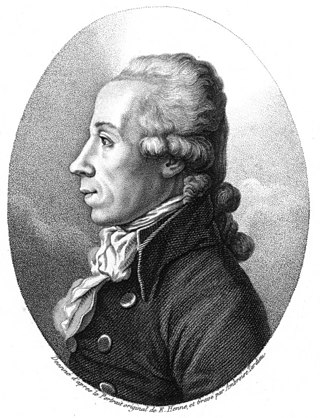
Martin Heinrich Klaproth was a German chemist. He trained and worked for much of his life as an apothecary, moving in later life to the university. His shop became the second-largest apothecary in Berlin, and the most productive artisanal chemical research center in Europe.

Jean Charles Galissard de Marignac was a Swiss chemist whose work with atomic weights suggested the possibility of isotopes and the packing fraction of nuclei. His study of the rare earth elements led to his discovery of ytterbium in 1878 and co-discovery of gadolinium in 1880.

Didymium is a mixture of the elements praseodymium and neodymium. It is used in safety glasses for glassblowing and blacksmithing, especially with a gas (propane)-powered forge, where it provides a filter that selectively blocks the yellowish light at 589 nm emitted by the hot sodium in the glass without having a detrimental effect on general vision, unlike dark welder's glasses. The usefulness of didymium glass for eye protection of this sort was discovered by Sir William Crookes.

Carl Gustaf Mosander was a Swedish chemist. He discovered the rare earth elements lanthanum, erbium and terbium.
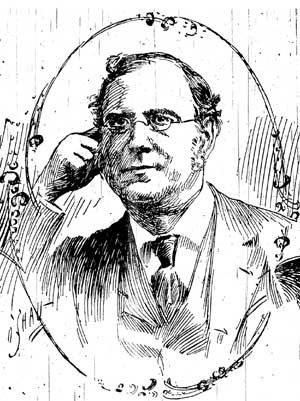
Marc Delafontaine was a Swiss chemist and spectroscopist who was involved in discovering and investigating some of the rare earth elements.

Jacques-Louis Soret was a Swiss chemist and spectroscopist. He studied both spectroscopy and electrolysis.

Eugène-Anatole Demarçay was a French chemist who designed an apparatus to produce a spark using an induction coil and used it to generate the spectra of rare earth elements which he examined using spectroscopy, thus detecting the element europium in 1896, and isolated it as the oxide europia in 1901. He helped Marie Curie to confirm the existence of another new element, radium, in 1898.
Decipium was the proposed name for a new chemical element isolated by Marc Delafontaine from the mineral samarskite. He published his discovery in 1878 and later published a follow-up paper in 1881.
Events from the year 1808 in the United Kingdom.
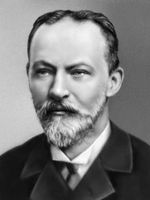
Bohuslav Brauner was a Czech chemist from the University of Prague, who investigated the properties of the rare earth elements, especially the determination of their atomic weights. Brauner predicted the existence of the rare earth element promethium ten years before the existence of the gap was confirmed experimentally. In the 1880s, when he already had started lecturing in Prague, he still competed internationally in cycling races.
Walter Minder was a Swiss mineralogist and chemist. In 1931, he became professor of radiology at the Institut du Radium at the University of Bern. He together with Alice Leigh-Smith announced the discovery of element 85 in 1940 and 1942. He proposed the name helvetium in 1940 and anglohelvetium in 1942 for the new element. Later it was proven that in fact he had not discovered element 85.
Mary Elvira Weeks was an American chemist and historian of science. Weeks was the first woman to receive a Ph.D. in chemistry at the University of Kansas and the first woman to be a faculty member there.
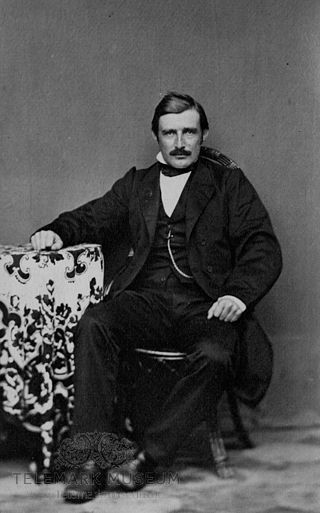
Tellef Dahll was a Norwegian mineralogist and geologist.
Oswald Helmuth Göhring, also known as Otto Göhring, was a German chemist who, with his teacher Kasimir Fajans, co-discovered the chemical element protactinium in 1913.
Victorium, originally named monium, is a mixture of gadolinium and terbium. In 1898, English chemist William Crookes reported his discovery of it in his inaugural address as president of the British Association for the Advancement of Science. He identified the new substance, based on an analysis of the unique phosphorescence and other ultraviolet-visible spectral phenomena, as a new chemical element, although this was later shown to be false. The name monium means "alone", because its spectral lines stood alone at the end of the ultraviolet spectrum. In 1899 Crookes renamed the purported element "victorium" in honor of Queen Victoria's recent diamond jubilee. He assigned it the symbol Vc. By 1905, however, French chemist Georges Urbain had proven that victorium was not a distinct element but rather an impurity of gadolinium.
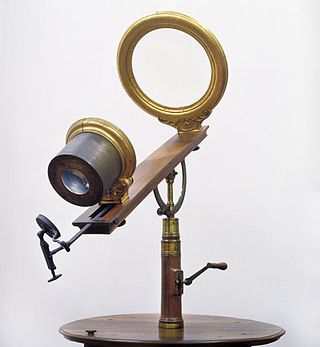
The Bregans lens is a large lens, mounted in a gilt wooden frame, with a focal length of 1,580 mm. Another smaller lens acts as a condenser and can be positioned by means of a sliding mechanism along a supporting track. Beyond the condenser is a small adjustable metal plate for holding specimens. The wooden mount on a small table fitted with castors, dated 1767, is the work of the Florentine artisan Francesco Spighi; the metal parts are signed by Gaspero Mazzeranghi. The maker of the lens, Benedetto Bregans, donated it to Cosimo III de' Medici in 1697. The instrument was used some time later by Giuseppe Averani and Cipriano Targioni for experiments on the combustion of diamonds and other precious stones. In 1814, Humphry Davy — on a visit to Florence with Michael Faraday — used the lens to repeat Averani's experiments. In 1860, Giovanni Battista Donati mounted the lens on a tube for use as a starlight condenser to observe the absorption bands of stellar spectra.
Clare de Brereton Evans was a scientist and academic who became the first woman to be awarded a doctorate in Chemistry (DSc). She was a pioneer translator of Meister Eckhart's German works.
Ann Catherine Horton was a British physicist and academic who was the first woman to be appointed to the lecturing staff of the Cavendish Laboratory.
Mary Virginia Orna is an American color chemist, historian of science, and professor emerita of the College of New Rochelle. Orna will receive the 2021 HIST Award for Outstanding Achievement in the History of Chemistry from the American Chemical Society's Division of the History of Chemistry “for her exemplary leadership in the worldwide community of the history of chemistry, especially for her original research in the area of color and pigment chemistry and the discovery of the elements, her commitment to education, her decades of service to the Division of History of Chemistry, and her continuing role in supporting and participating in the worldwide research in the archeology of chemistry.”
CERM is a research facility at the University of Florence specialized in the application of NMR studies to biomolecules. It is a leading research center in Tuscany.









